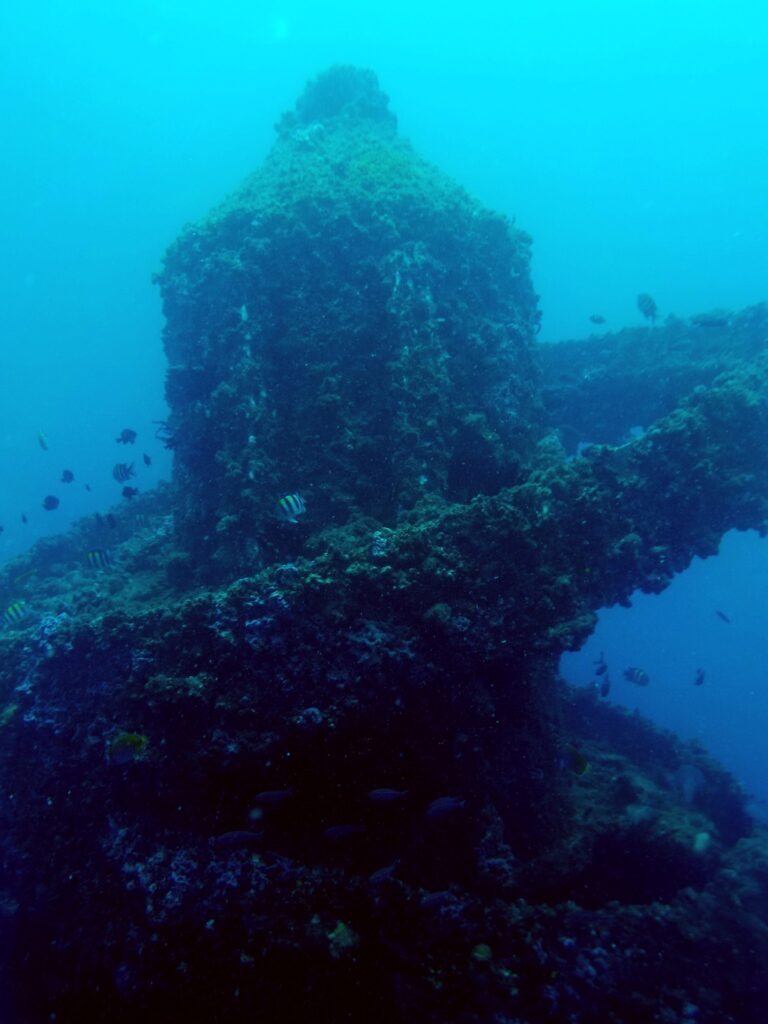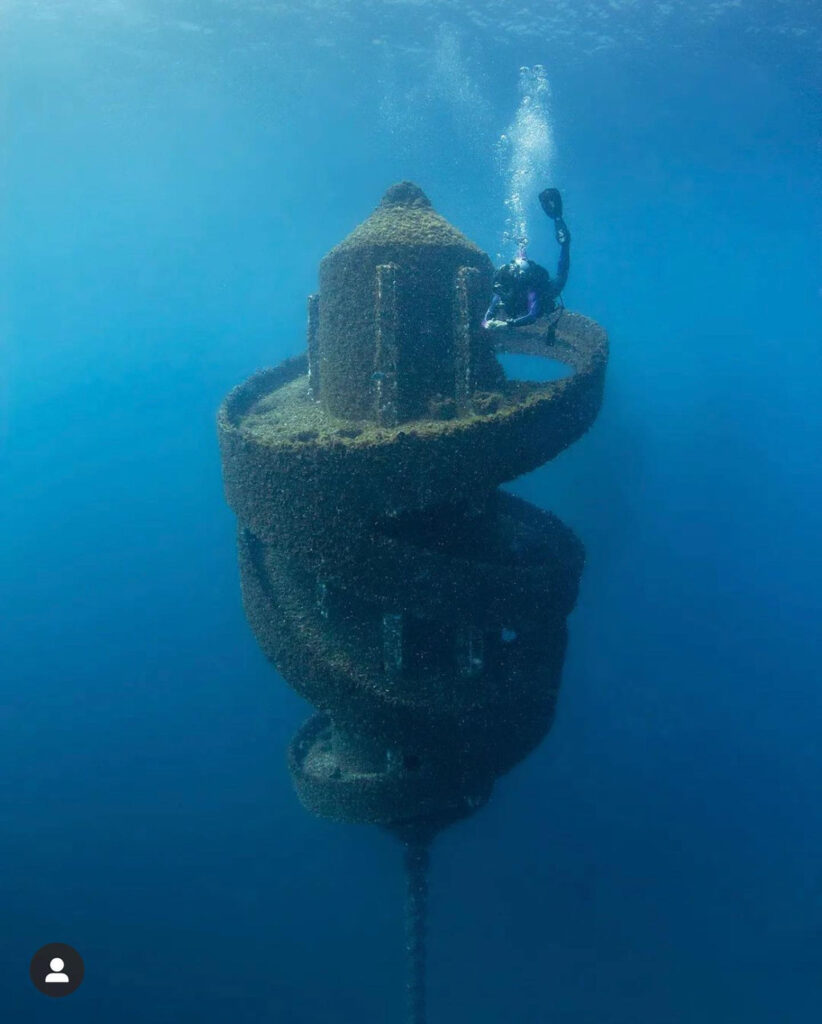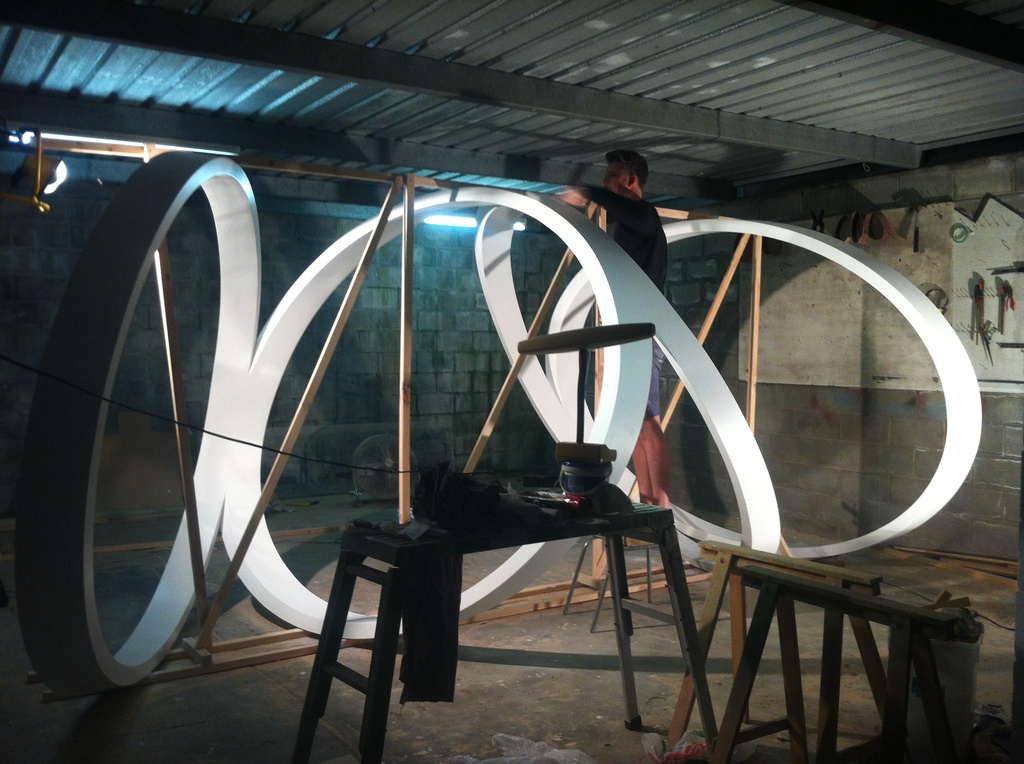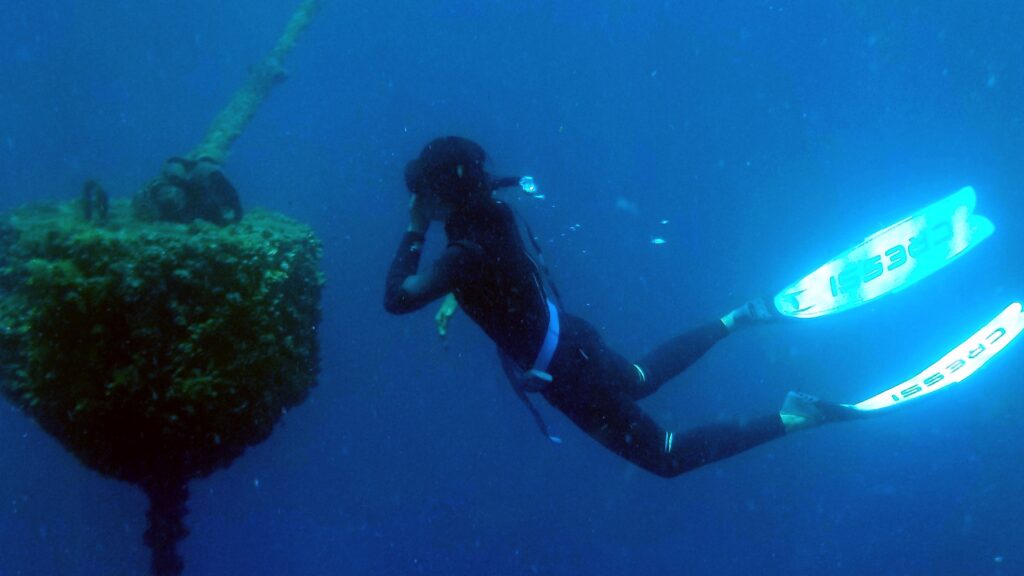Pamela See dives to find an underwater installation by Daniel Templeman designed for the enjoyment of all sea creatures.
Underwater artwork buoys spirits of all kinds…
Amidst efforts to protect the Great Barrier Reef in North Queensland, a virtual metropolis for marine life was developed in the state’s south—and it’s an artwork. When asked about the audience for Wonder Reef, sculptor Dr Daniel Templeman replied, “Well, it’s kind of niche.” The 32,000-metre-square underwater installation, located a stone’s throw from Surfers Paradise, is fast becoming a favoured destination for beginner to intermediate divers in South-East Queensland. Whilst not the first artwork to be submerged in Queensland, Wonder Reef is an altogether different “kettle of fish”. Within it, the aquatic residents are prioritised over the visiting terrestrial variety of tourist.
A growing attraction
A fifteen-minute tinny ride from Runaway Marina, Wonder Reef is fast becoming a favoured destination for beginner to intermediate divers in South-East Queensland. Upon the surface of the water, large ball-like buoys bob against a horizon of high-rises. Only on the clearest of days are contours of the cylindrical forms visible via boat. A diver might descend past benign longfin batfish. They may then begin to discern the finer details of these supersized structures. Teeming with tiny creatures, each crevice constitutes a microcosm within the monoliths. A nook would provide respite to a brightly-coloured camel shrimp. A cranny could conceal a camouflaging day octopus. A glimpse of a vibrant nudibranch (aka sea slug), as it saunters out of the kelp, might be caught. An ambush by a ferocious lionfish may be witnessed. The piscifauna glistens within the muted green foliage.
Many moving parts
- Daniel Templeman constructing a sculpture using wood
- Daniel Templeman with one of the flutes that he designed for Wonder Reef
Project managed by Subcon Blue Solutions (recently acquired by Mermaid Marine Australia) for the Gold Coast City Council, Dr Templeman responded to an advertisement telling “artists [to] get [their] pencils ready.”
Dr Templeman said, “There was a whole series of meetings with the advisory group, which was diverse – we worked with marine architects and with the government. The marine biologist was really about: if this shape [were] a little steep[er] and this [became a] tighter space… [it would become] the kind of space [for] a [certain] species. But… we built it to capture the broadest set of outcomes – opportunities for life to take hold.”
Each of the nine flutes is tethered to a 72-ton foundation, which is secured using 66 tonnes of “earth-friendly” concrete. There are two kinds of flute: five-ringed, to which boats can moor, and four-ringed, through which divers can swim.
“Some things like to move vertically, some things like to move horizontally,” Dr Templeman said. “How do we create safe spaces? “What are all the different surfaces that they like? “We effectively tr[ied] to create architecture for sea life,” said Dr Templeman.
Components of Wonder Reef were fabricated in Maryborough using steel sourced from Port Kimbler. Whereas 258 specimens of coral were transplanted from Palm Beach, the kelp spread from the seabed onto the nourishingly corroding surfaces.
His legacy of landmarks

Populations of aquatic flora and fauna have established on Wonder Reef. Photograph by Gonzalo Cortes from OceanSense Freediving
In addition to sustaining marine life, the Gold Coast City Council stipulated that the structures be “built to withstand a [one in] 200-year storm—that’s an 18-meter wave, which would pretty much wipe out the Gold Coast.”
Above all, “it had to be iconic,” said Dr Templeman. Place-making has been a primary focus of his terrestrial public art for the past two decades. A concern with “perception and connection” has intrigued passersby from Confluence (2004), which accentuates the architecture of the Brisbane Magistrate’s Court, to Three Rings (2018), which adorns Suzhou’s Olympic Sports Park. Many of his artworks could loosely be described as extruded surfaces. The deceptively simple forms, which are monolithic in scale, are intended to “heighten awareness” of “light, space, time” – and all-in-all “inform [the] experience” of viewers.
The artwork of this post-minimalist sculptor might be of particular interest to subscribers of post-structuralist Gilles Deleuze. Templeman’s monumental rings might be read as illustrative of Deleuze’s “monad” circles. In Deleuze’s book, The Fold, they are employed as a metaphor for: “The world [being] an infinite series of curvatures or inflections, and the entire world [being] enclosed in the soul from one point of view.” However, just as Templeman has factored in the physical movement of viewers around and through his artworks, he also offers them conceptual space to register their own thoughts.
To design the public artworks, a majority of which engage sheet metal, Dr Templemen, “…usually make[s] models out of cardboard…”
“And then, the sculptures that I make myself—the ones that are not quite so large scale—I usually use timber. “… they need to be experienced in three dimensions,” said Dr Templeman.
It would seem that this son of a cabinet maker needs to physically manipulate materials to ideate and design.
The mother of all invention
At odds with their size, Templeman’s sculptures have always appeared understated in aesthetics. In the case of Wonder Reef, the flutes, which might remind a diver of plumes of expelled air, extend around 22m upwards from the seabed. Aside from requiring distance to be viewed in their entirety, the forms are obscured by flora and fauna. But, humans are only one kind of being catered for by this artwork. The fish species that frequent the site include wobbegong sharks, giant groupers and white-spotted eagle rays. A majority of other underwater artworks are representational and often illustrative of social history. This formal aesthetic reflection upon the surrounding environment and the ecosystem that it supports makes Wonder Reef truly unique within a growing genre.
- Photograph by Gonzalo Cortes from OceanSense Freediving
- The author descending to view the Wonder Reef
Further reading
City of Gold Coast. (2023, August). Wonder Reef Diver Safety Plan.
Daniel Templeman. (n.d.). Confluence 2004.
Deleuze, G. (1993). The fold : Leibniz and the Baroque. Continuum.
Trauthwein, G. (2022, August). Maritime Magazines.
Urban Art Projects. (n.d). Daniel Templeman.
Wonder Reef. (2023). Citizen Science.
Wonder Reef. (2023, November 15). Navigating Ecological Challenges: Coral Conservation at Wonder Reef.







